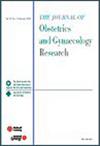Comparative immuno-profiling of proliferative and disordered proliferative endometrium in anovulatory abnormal uterine bleeding
Abstract
Background
Anovulatory abnormal uterine bleeding (AUB) is frequently associated with prolonged unopposed estrogen exposure, resulting in histological patterns ranging from proliferative to disordered proliferative endometrium (DPE). While these entities are histologically distinguishable, their immunological microenvironments remain underexplored.
Objective
To compare the immune cell profile of proliferative and DPE in women with anovulatory AUB, focusing on key immune markers: CD4, CD8, CD56, and CD68.
Methods
wEndometrial biopsies from women diagnosed with anovulatory AUB were classified histologically as proliferative or disordered proliferative. Immunohistochemical staining was performed to quantify CD4+ helper T cells, CD8+ cytotoxic T cells, CD56+ natural killer cells, and CD64+ macrophages. Quantitative analysis was conducted using high-power field (hpf) counts, and statistical comparisons were made using appropriate non-parametric tests.
Results
A total of 73 women with AUB were analyzed, including 30 with proliferative and 43 with DPE. No statistically significant differences were observed between the two groups in age, body mass index (BMI), endometrial thickness, Pictorial Blood Assessment Chart score, or immune cell counts (CD4, CD8, CD68, CD56/hpf). Correlation analysis revealed significant positive associations among immune markers, particularly between CD4 and CD8 (r = 0.425, p < 0.001), CD8 and CD68 (r = 0.316, p = 0.006), and CD4 and CD56 (r = 0.377, p = 0.001). CD56+ cells also showed a negative correlation with BMI (r = −0.251, p = 0.032) and a positive correlation with duration of bleeding (r = 0.289, p = 0.013).
Conclusion
The local immune cell infiltration may not differ substantially between proliferative and DPE in the context of AUB. No statistically significant differences were observed between the two groups with respect to clinical parameters, endometrial thickness, or immune cell marker expression (CD4, CD8, CD68, and CD56). Positive correlations between CD4, CD8, CD68, and CD56 cells suggest coordinated immune activity within the endometrial microenvironment. Further studies with larger sample sizes and functional immune profiling are warranted to explore subtle immunological variations that may influence endometrial physiology and pathology.




 求助内容:
求助内容: 应助结果提醒方式:
应助结果提醒方式:


